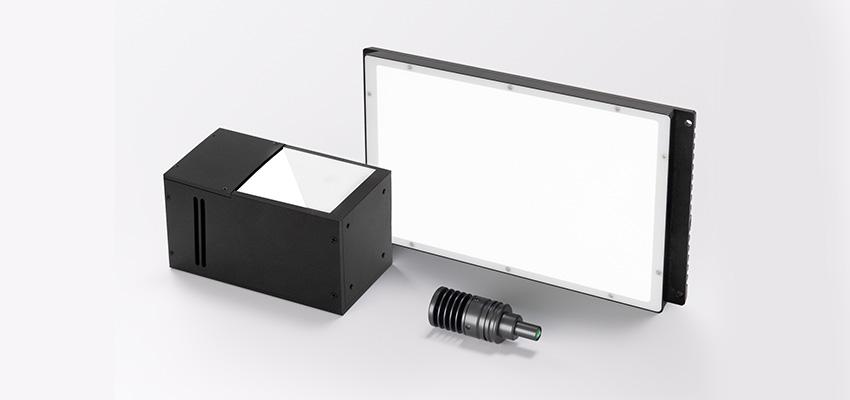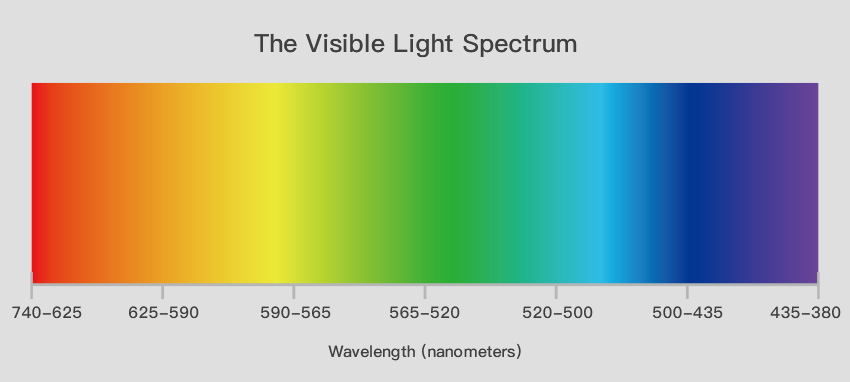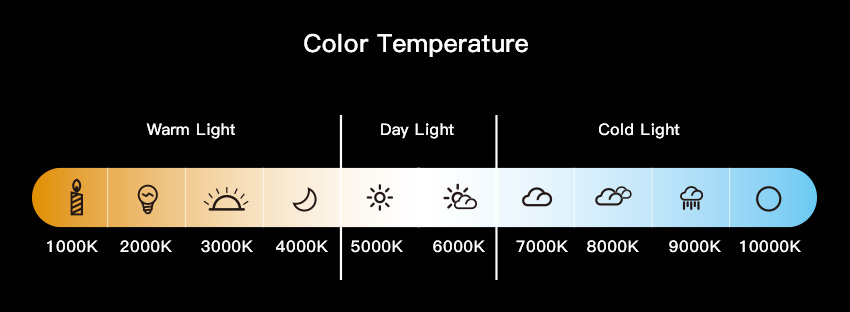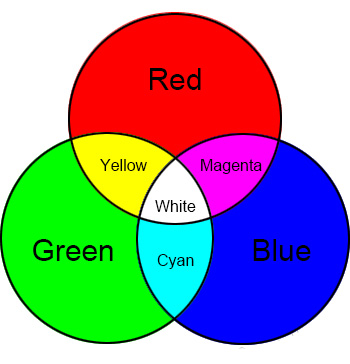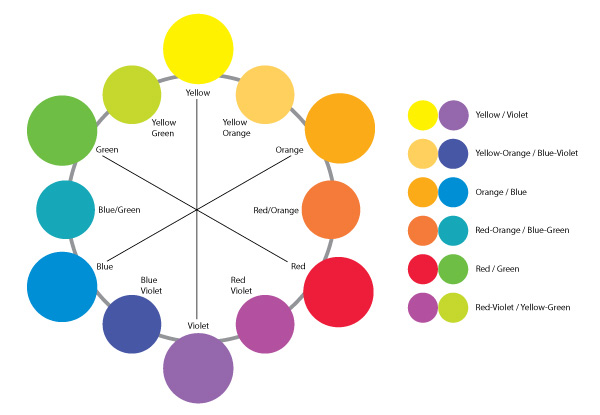Light Measurement
-
Radiant Energy and Optical Energy
Energy emitted, propagated, or received in the form of radiation is called “energy”, with the unit of joule (J). The quantity of light within the visible range integrated over time is called “optical energy”, with the unit of lumen-second (lm-s).
-
Radiant Flux and Luminous Flux
The power emitted, propagated, or received in the form of radiation or the quantity of radiation energy emitted, propagated or received in a unit of time in the form of radiation is called “Radiant Flux”, with the unit of watt (W). The visual power perceived by the human eye (the product of radiation energy and the relative spectral sensitivity of the human eye to that waveband received per unit time) has a unit of lumen (lm). The integral of radiant flux over time is called “radiant energy”, while the integral of luminous flux over time is called “optical energy”.
-
Radiant Exitance and Luminous Exitance
For a finite-sized surface light source, the ratio of radiant flux emitted by an element in the surface towards a hemisphere in space and the circular surface area of the surface at that point is defined as “radiant exitance” and its unit is W/m². For a visible light surface light source, the ratio of the luminous flux emitted by an element on the surface toward the hemisphere space area and the area of the element on the surface is called “luminous exitance”, and its unit is lux (lx).
-
Radiant Intensity and Luminous Intensity
The ratio of the radiant flux emitted by a point light source in a given directional solid angle to the value of the solid angle in that direction is defined as the “radiant intensity” of the point light source, and its unit of measurement is watt/steradian (W/sr). Generally, the point light source is anisotropic, and its luminous intensity distribution varies with the direction. The unit of luminous intensity is the candela (cd).
-
Radiance and Luminance
The ratio of the radiant intensity, at a point on the light source surface, in a given direction to the area of the orthographic projection of that area perpendicular to the given direction, is called “radiance” and has a unit of W/(sr·m²).
-
Radiation Efficiency and Luminous Efficiency
The ratio of the total radiant flux emitted by the light source to the electrical energy provided to the light source is called the “radiation efficiency” of the light source.
-
Irradiance and Illuminance
The ratio of the radiant flux incident on a surface element to the area of that element is called “irradiance” and has a unit of W/m². Illuminance is defined from the angle of receiving the radiation flux from a surface element of an object. When the reflection body that does not radiate itself receives radiation, it absorbs part of it and reflects part of it.
Colors of Light
Sunlight is a mixture of various colors of light, and the nature of colors is electromagnetic waves. According to different wavelengths, electromagnetic waves can be divided into communication waves, infrared light, visible light, ultraviolet light, X-rays, y-rays, and cosmic rays. Among them, the light waves with wavelengths in the vacuum range of 380~780nm are visible to the human eye, known as visible light. With the help of a prism, visible light can be separated into seven colors: red, orange, yellow, green, cyan, blue, and purple. The longest wavelength is red light with a range of 640~780nm, while the shortest is purple light with a range of 380~430nm. The longer the wavelength, the stronger the diffraction line, and the shorter the wavelength, the stronger the penetration.
Temperature of Light
When the spectral distribution of the light emitted by a light source and the spectral distribution of the radiation emitted by a perfect black body that does not reflect or transmit light at a certain temperature are the same, the temperature of the absolute black body is called the color temperature of the light source. Usually, light sources with high color temperatures have a bluish tint, while those with low color temperatures have a reddish tint. When a high-color-temperature light source is used for illumination, low brightness can give people a gloomy atmosphere, while high brightness under a low-color-temperature light source can make people feel stuffy. Therefore, light with a blue tint is called cold color (>5000K), while light with a red tint is called warm color (<3300K), and the light between the two is called intermediate color (3300~5000K).
When two light sources with very different colors are used in the same space, a hierarchical effect will occur. If the color contrast is large, they can obtain both brightness and color levels. When a light source with a low color temperature is used for illumination, it can make red more vivid. If a light source with a medium color temperature is used, it can make blue more cool, and if a light source with a high color temperature is used, it can make objects feel cold.
Color Rendering of Light
Color rendering refers to the degree to which a light source presents the color of an object itself, which is represented by the Color Rendering Index (CRI). Light sources with high color rendering have good color performance, meaning that the colors seen are closer to the true colors. Light sources with low color rendering have poor color performance, meaning that the colors seen have a large deviation.
CRI is a common parameter in the field of lighting technology, which measures the degree to which colors match when objects are illuminated with the light source and when they are illuminated with a standard light source (usually sunlight), i.e., the degree of color fidelity. CRI is represented by Ra, and the higher the Ra value, the better the color rendering of the light source.

There are faithful color rendering and effect color rendering. Faithful color rendering can accurately represent the original colors of an object, and the color rendering is best when the CRI is close to 100. Effect color rendering can highlight a particular feature by intensifying it through color addition, in order to achieve the purpose of emphasizing specific colors.
The color rendering of a light source is not directly related to the color temperature. The color temperature and color rendering index of several common light sources are shown in Table.
| Light Source Name | Color Temperature/K | Color Rendering Index |
|---|---|---|
| Incandescent Lamp/500W | 2800 | 85~100 |
| Dysprosium Lamp/1000W | 4300 | 85~95 |
| Fluorescent Lamp/Daylight 40W | 6500 | 70~80 |
| Energy Saving Lamp/Philips | 2700~6500 | 78~92 |
| Fluorescent High-Pressure Mercury Lamp/400W | 5500 | 30~40 |
| Common High-Pressure Sodium Lamp/400W | 2000 | 20~50 |
| CSmall Power Ceramic Metal Halide Lamp | 3000~4200 | 80~90 |
| White Light Emitting Diode | 3300~12000 | 75~93 |
Primary Colors
Primary colors are the “basic colors” that cannot be obtained by mixing other colors. Since the human eye has cone cells that perceive three different colors – red, green, and blue – the color space can typically be expressed using three primary colors, known as “primary colors” or “primary additives.”
The three primary colors of light are R (red), G (green), and B (blue) (the three primary colors of pigments are red, yellow, and blue). Light of different wavelengths presents different colors, and the wavelength determines the characteristics of the color. The longer the wavelength, the stronger the penetration (diffraction) of light: the shorter the wavelength, the stronger the dispersion. Different color combinations of the three primary colors can produce various colors.
-
Infrared Light
Infrared light, also known as infrared radiation, is an electromagnetic wave with a wavelength between microwaves and visible light. Therefore, using an infrared night vision device, even in the pitch black night, people can see objects as clearly as in daylight, thanks to the effect of infrared light.
Characteristics of infrared light: Infrared light has strong penetration and is invisible to the human eye.
Applications of infrared light: When there are a lot of scratches or flaws on the surface of an object, using infrared light to shine on it can better extract the contour features.
-
Ultraviolet Light
Ultraviolet light is the wavelength of light in sunlight between 10~370nm and can be divided into UVA (wavelength of 320~370nm, long wave), UVB (wavelength of 280~320nm, medium wave), UVC (wavelength of 100~280nm, short wave), and EUU (10~100nm, ultra-high frequency).
Characteristics of ultraviolet light: Objects under ultraviolet light will emit fluorescence. When detecting features such as ink and label glue on an object, a UV light source can directly shine on the object, and the object will emit fluorescent radiation, displaying defects that are invisible under visible light.
Applications of ultraviolet light: In the currency printing and ticket printing industries, ultraviolet light is commonly used to detect specific features or areas with adhesive on banknotes. It can also detect fluorescent characters, barcodes, QR codes, and defects such as scratches on product shells.
Similar and Complementary Colors of Light
-
Definition of Similar and Complementary Colors of Light
As shown in Figure 2-8, colors that are close in color in the color wheel are called similar or adjacent colors. For example, green and blue-green are called similar colors, and when an object is illuminated with similar color light, the color of the object will become brighter. Colors that are symmetrical about the center of the color wheel are called complementary colors. For example, green and red are called complementary colors, which are located in symmetrical positions with large wavelength differences. When an object is illuminated with complementary color light, the color of the object will become darker.
According to the color wheel, using the opposite color to illuminate can achieve the highest level of contrast. If warm-colored light is used to illuminate an object that emits cool-colored light, the color will darken. If cool-colored light is used to illuminate an object that emits cool-colored light, the color will brighten.
When detecting colored objects, using the similar or complementary colors of light is the main consideration for choosing between bright field or dark field lighting. Bright field is the most commonly used lighting scheme, which is formed by using front-facing direct light illumination. The dark field is mainly formed by low-angle or backlit illumination. For different project detection needs, different types of lighting methods are selected. Generally, the dark field will make the background appear dark, while the inspected object appears bright.
-
Application of Similar and Complementary Colors of Light
For example, when multiple colors of light are illuminated on a blue object, from the perspective of the object’s chromaticity, all other colors of light will be absorbed, and only the blue light is the closest to its original color. Therefore, blue light is the easiest to reflect, and the blue area will receive more light, resulting in a brighter appearance. Similarly, the same light illuminating a red object, the color of the red light on the red object will also appear brighter.
Objects that are white or black, white objects have the best reflection, and black objects absorb light better. When a feature is displayed as black, it means that all light is absorbed by the object itself, and there is no reflection phenomenon. When entering the lens, it will be displayed as black. This is the display of different colors of light sources being absorbed and reflected by objects. The conclusion drawn once again verifies that using light sources with similar colors to the object color will make the object brighter.
Application of Color Filtering and Enhancement
-
Determining Lighting Color Based on Object Color
As shown in Figure 2-9(a), the “Thank you for your patronage” text on the bottle cap is not needed for inspection and may cause interference to the results. Therefore, it is necessary to use lighting that is the same color as the text to illuminate the background of the object, such as selecting the complementary color of red to achieve dark field lighting for red text. As shown in Figure 2-9(b), using the red body color to achieve bright field lighting, filtering the text with red light, that is, adjusting the background and text to the same color to filter out unwanted object features.
Figure 2-9 Color filtering: (a) object with red text; (b) illuminating red text with red light.
-
Contrast features using light sources of different colors
As shown in Figure 2-10, by using different colored lighting, the background of the logo can be illuminated in different colors. If the logo itself is green, using red light to illuminate it can increase the contrast of the object features.
Figure 2-10 Contrast of features using light sources of different colors: (a) red lighting; (b) green lighting; (c) blue lighting.
-
Eliminating the influence of the background color on features using similar or complementary colors
When inspecting a bottle cap as shown in Figure 2-11, if blue light exists in the working environment, it may have a certain impact on the detection of actual features. To weaken the influence of blue light, it is possible to achieve bright field or dark field lighting by using lighting of similar or complementary colors to eliminate the effect of the background color on the detection results.
Figure 2-11 Inspection of a bottle cap: (a) object with blue light; (b) object with background color eliminated.


